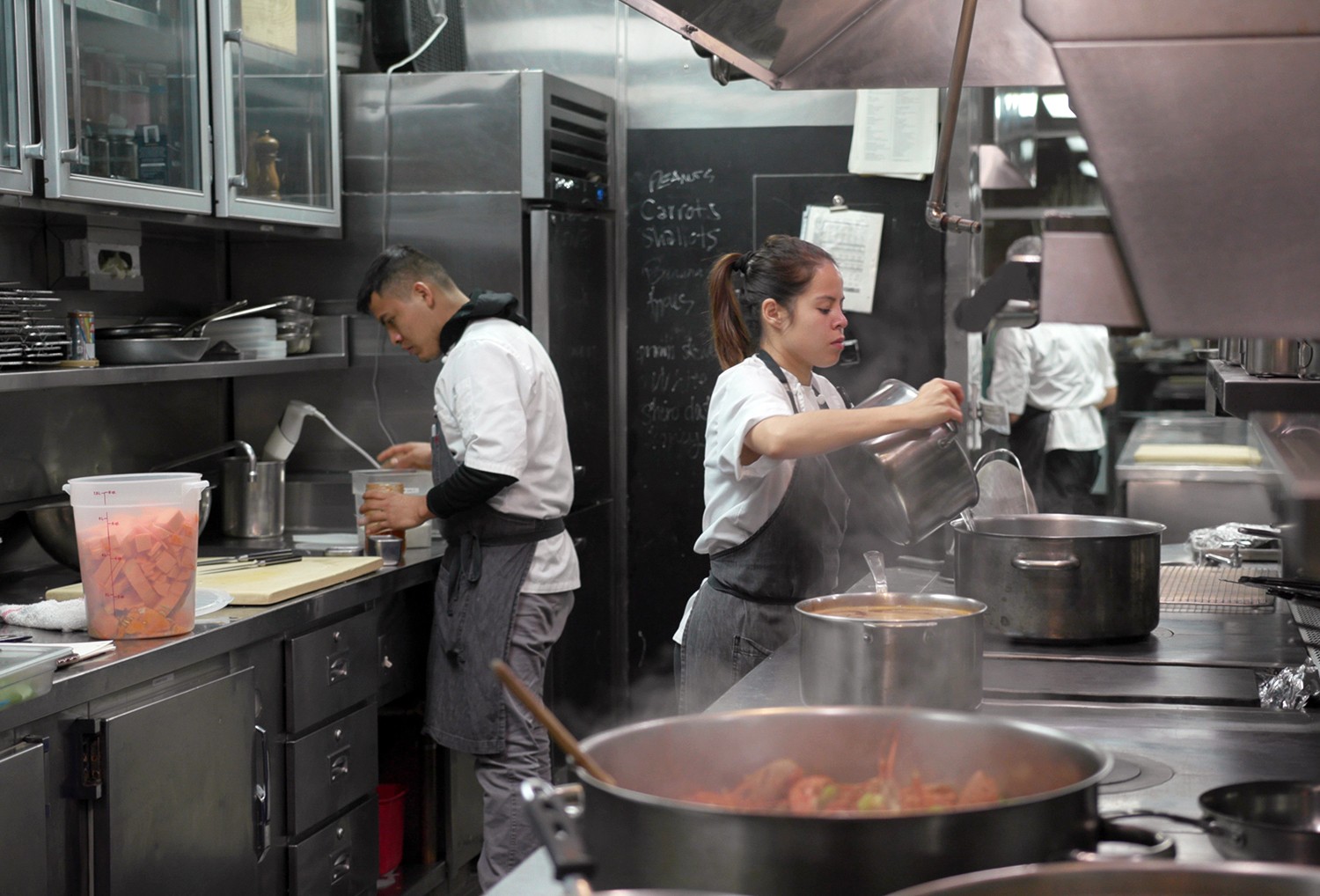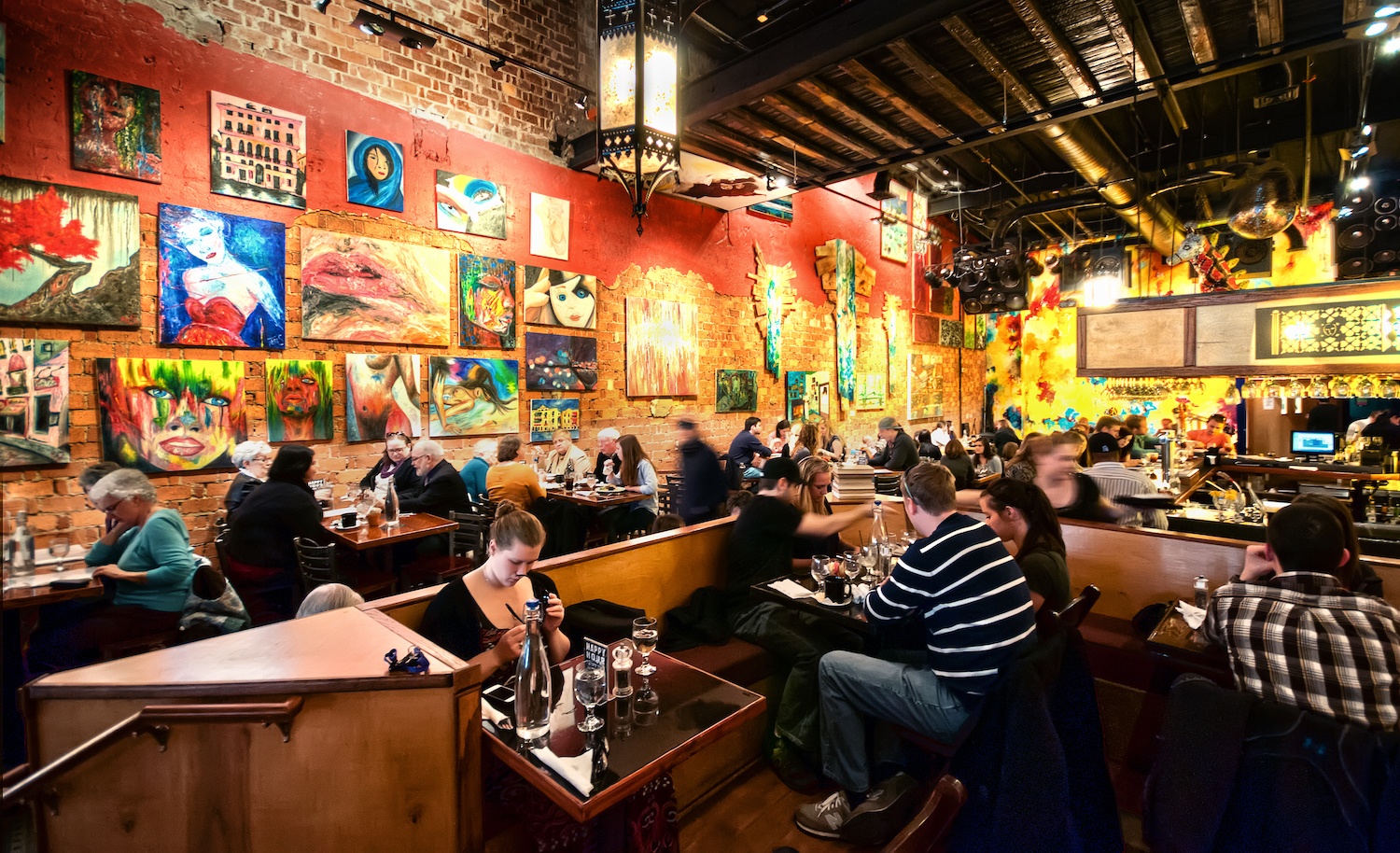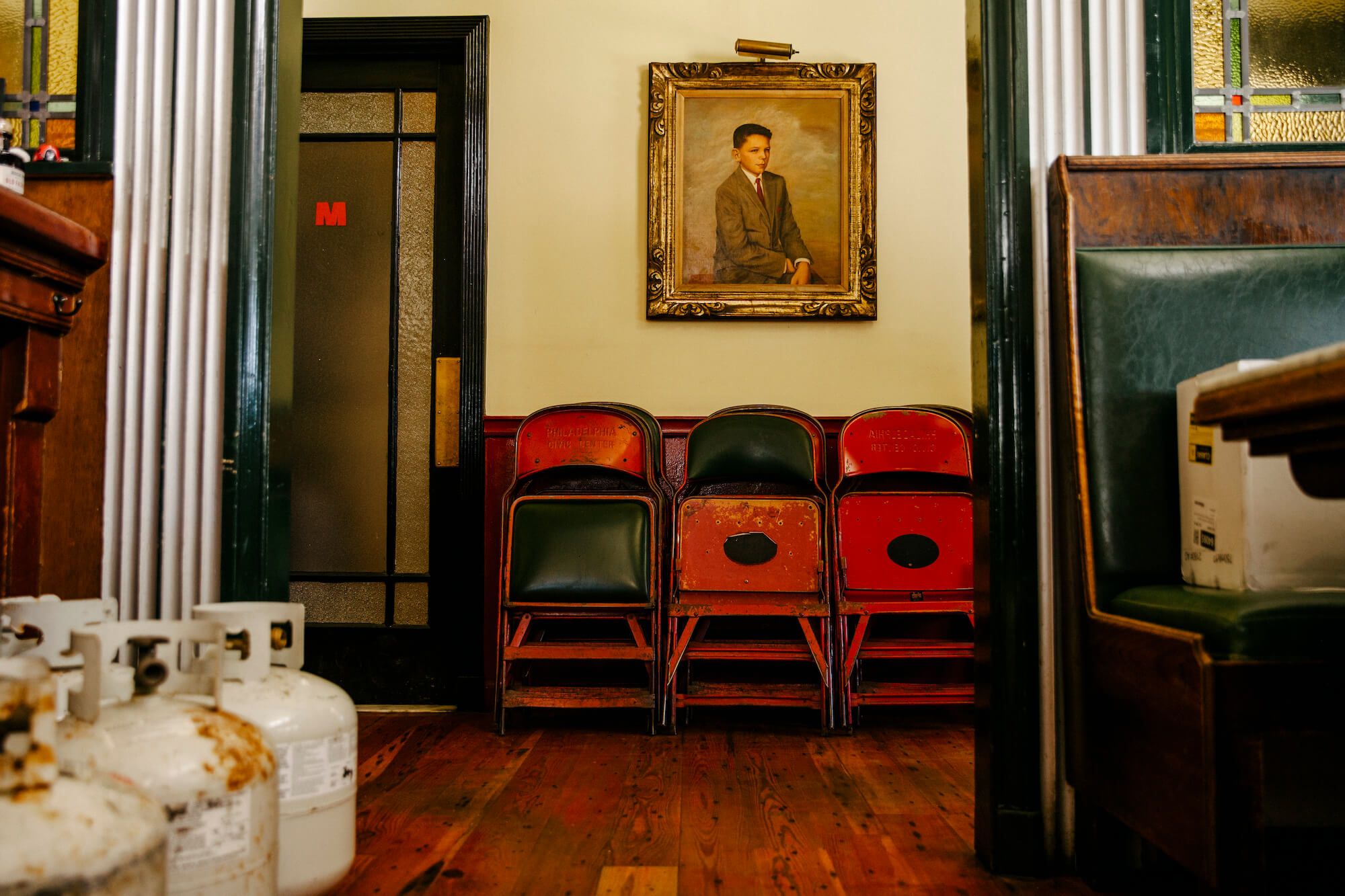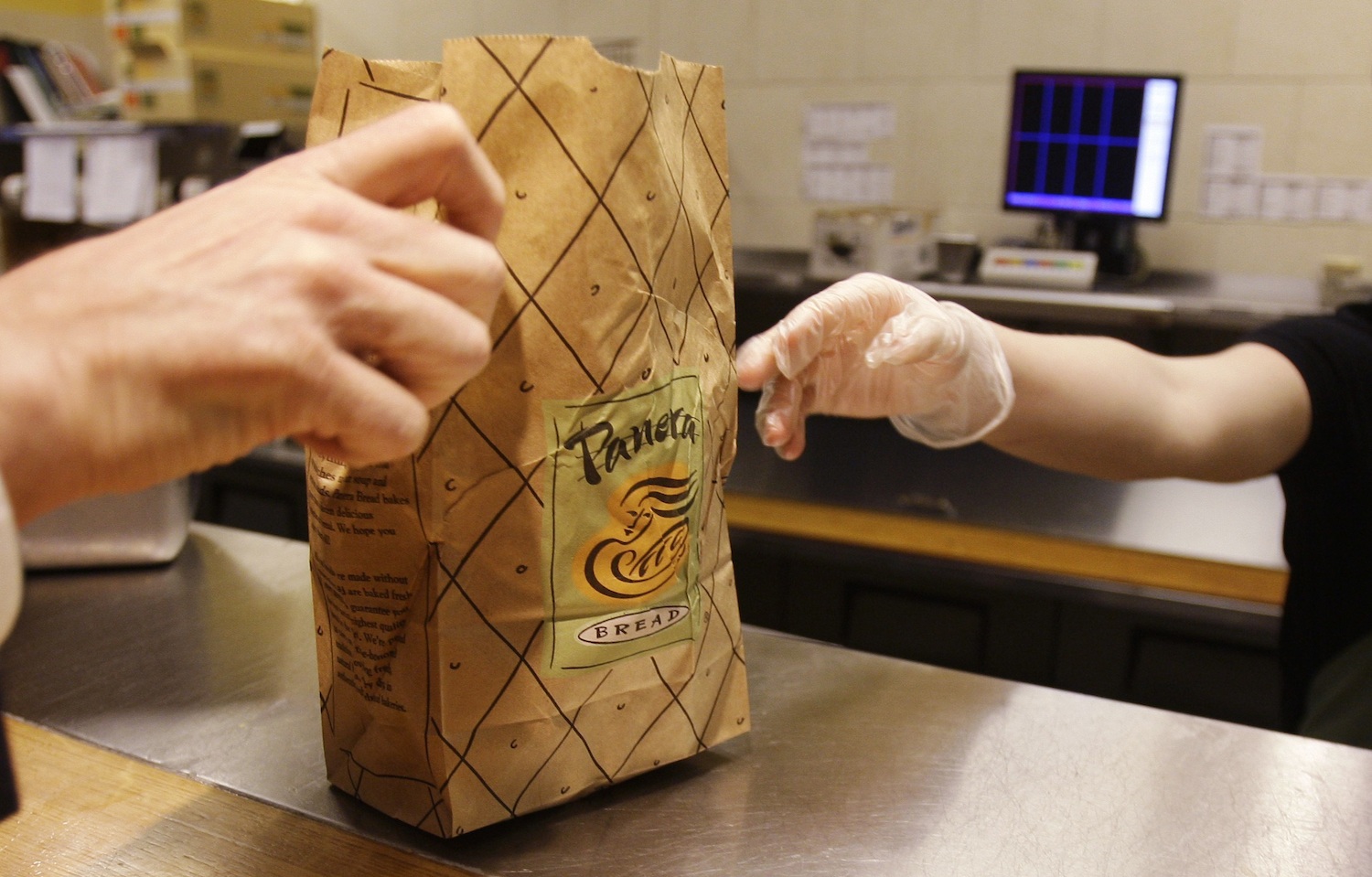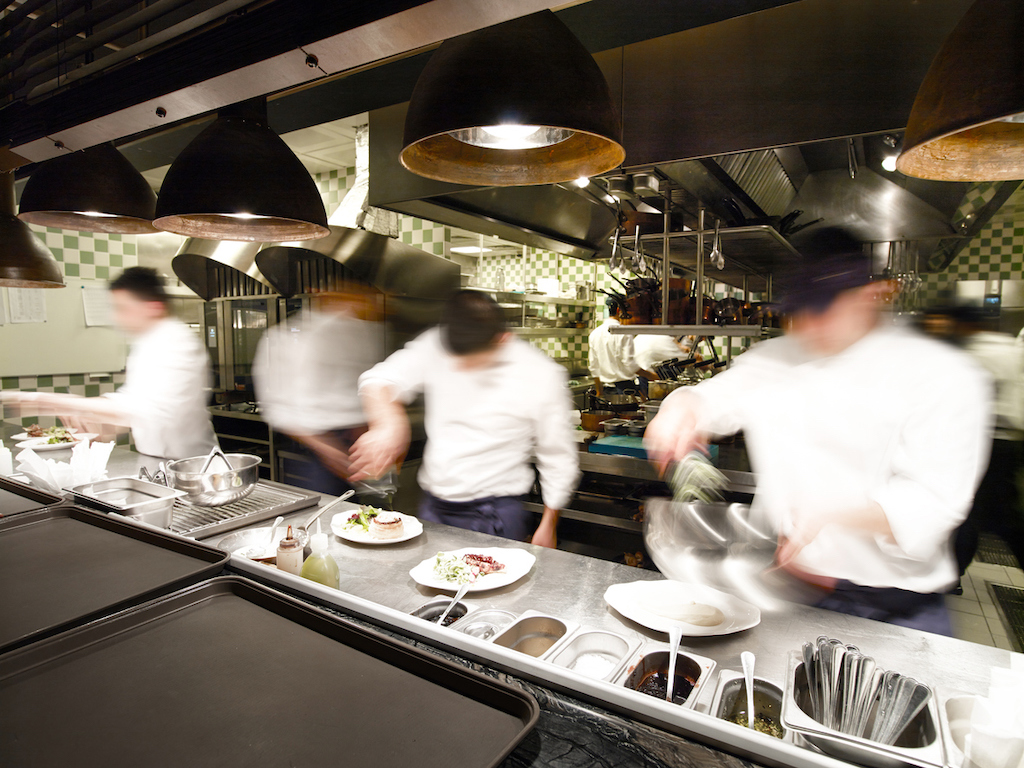
courtesy of Bret Thorn
As an editor at Nation’s Restaurant News, Bret Thorn witnessed the steady erosion of restaurant health for years. But he considers what happened in 2020 to be warp-speed evolution—desperately in need of interventions—and says whenever this ends, we’ll be looking at a Roaring Twenties-style moment.
Bret Thorn wants a beer.
Not any beer, mind you. One poured by a bartender, not consumed at home or shivering in a yurt. One served at a neighborhood place where he can choose to sit at the bar and schmooze with strangers, sit at the bar and not talk at all, or take a table with friends. One that provides him access to all the intangibles of going out.
Maybe 2022, he figures—and his estimate, after 21 years covering the restaurant industry, is more informed than most. Thorn, the senior food and beverage editor at Nation’s Restaurant News, has worked for NRN since fate dropped him at the trade publication’s door after a serpentine of other possibilities: When his college picks turned him down he took a consolation year at culinary school in Paris, went back to college, spent a year abroad in China and then five more in Thailand. Once he returned to the U.S. he moved from Denver to New York’s West Village, went three for three on job interviews, and decided to report on food rather than finance.
From his vantage point today, Thorn can say that he saw restaurants’ current troubles coming—or rather, that he’s witnessed the steady erosion of restaurant health for years. The pandemic exacerbated problems that were already there, and in the process shoved more than 110,000 establishments over the edge, to oblivion. Still, he considers what’s happened so far to be warp-speed evolution, not revolution; what happens next will be more of a revolution. Or at least it should be, if the industry’s going to enjoy better long-term health.
Related: When restaurants close, even temporarily, what happens to the communities that rely on them?
Nation’s Restaurant News joined forces 10 years ago with Restaurant Hospitality, where Thorn also serves as senior editor, so two “very different” trade publications now cover the entire restaurant spectrum together, from fast food to fine dining, in print and online. Thorn spoke with The Counter about what it’s like to spend almost a year covering an industry in extended crisis, as it tries to survive on the government aid equivalent of a cup of tea and an aspirin. A new president and Congress have rekindled hope for more help, but challenges, some old, some new, lurk in the shadows.
The following is a condensed and edited version of our conversation.
R-E-S-P-E-C-T
I tend to be flip, I’m a bit of a smart ass, but that’s not appropriate when you’re asking someone how they manage to stay in business. We launched a podcast in February 2020, which I still do three times a month, and it went from ‘Hi, I’m going to talk to Chris Cosentino for half an hour about how he uses aged beef to make steak tartare,’ to totally serious conversations about how restaurants were changing their marketing, their approach to speaking to customers, looking after staff.
And we had to report on how incredibly fast restaurants changed what they were doing. By March 12 or so, Canlis, a fine-dining restaurant in Seattle, was saying, ‘We sell hamburgers now.’
We had to cover an emergency that became a 10-month-long emergency; we were required to focus on how restaurants adapted to that. All the changes owners had to make: Offering groceries? Why is a restaurant offering groceries, and how long will that last? The tenor of our coverage had to be more serious. It’s not so much the case anymore, less emergency, less dark tones, though we had those again after George Floyd was murdered and we wrote about how restaurants were damaged, but more so, how they rose to the occasion and spoke to social justice.
By about August people got back to what they call the new normal, which I hate. It’s not normal, not the status quo, not the way things are supposed to be.
Sense and sensibility
I think we’re in a highly sensitized moment that was happening before Trump was elected, but his election saw the rise of that group of horrible people who were kind of anti-sensitivity.
Since I was in college in the ‘80s I’ve tried to amplify the voices of people who are not white men. It’s been a goal forever, but it has a new sense of urgency. We did a whole issue on Black-owned restaurants, we did a video series, and there have been more women’s voices since #metoo. We work to not always take the chef who’s handed to you for an interview, who’s still, usually, a white male chef.
It’s easy to slip into old patterns, but you must find voices that are not always heard.
All cuisine is changed when it’s presented by a restaurant, certainly by chain restaurants. The Olive Garden isn’t Italian. Chinese restaurants in the U.S. were invented for the U.S. And chicken teriyaki is what many people think of as Japanese food, and it is, but it’s adapted. French dressing, my God, what is that? It’s vinaigrette with ketchup. It’s not anything.
The young staff members often take the lead in terms of how we select words we use, not pandemic-related, but modern-times related, when we’re talking about cuisines that are not French or Italian. I hate the term “ethnic.” It’s stupid. And they’ve been very sharp-eyed about not using terms like “mainstream,” making sure we’re telling stories in a way that’s sensitive to the origins of a cuisine. I lived in China and Thailand, and I am aware of the need to paint different cuisines with a smaller and more complex brush than we do.
When Shake Shack came out with a Korean fried chicken sandwich I reported that they have this new sandwich, just straight, but a colleague covers Shake Shack as part of her beat, so I pointed out that it’s not quite Korean fried chicken; it’s a fried chicken sandwich with Korean flavors.
But all cuisine is changed when it’s presented by a restaurant, certainly by chain restaurants. The Olive Garden isn’t Italian. Chinese restaurants in the U.S. were invented for the U.S. And chicken teriyaki is what many people think of as Japanese food, and it is, but it’s adapted. French dressing, my God, what is that? It’s vinaigrette with ketchup. It’s not anything.

Bret Thorn has witnessed the steady erosion of restaurant health for years. The pandemic exacerbated problems that were already there.
courtesy of Bret Thorn
It’s good to get pissed off about things like that, I guess, but every food is simplified when it’s served by a restaurant, unless it’s a restaurant specializing in that cuisine in a strip mall in a suburb. If there’s a larger audience it changes, and in a way that’s good, in a way that’s myopic.
We are certainly more sensitive, sometimes to our detriment. Andy Ricker, who has studied Thai food, ought to be able to make it. Rick Bayless studied anthropology and Latin American cultures, as well as being a chef who cooks Mexican food, and Diana Kennedy studied Oaxacan food all her life. To say they can’t cook those foods is weird. No cuisine is pure; there’s always a dialogue with other cuisines.
Old business—
Many of the current conversations about restaurants started before the pandemic.
Models have to change, and it’s going to mean higher prices; I don’t know how else you do it. And it means being smarter about labor—who needs to be working when, pay them well, provide medical insurance, and then maybe you need to change medical care in this country to a single-payer system, so you don’t burden employers.
Restaurants that are doing well, now, are ones that are good at delivery, so there’s a future in ghost kitchens, restaurants without dining rooms, delivery or take-out only. Might be in a warehouse off an exit on the freeway. Why have an expensive loss leader, a real restaurant, in someplace like Santa Monica, California, where rents are so high?
The reason you couldn’t get good Mexican food in New York, for years, was not because there weren’t Mexicans cooking it, but because the customers didn’t know what Mexican food was. You dumb it down. The cuisine adapts to the people who are eating there, but that’s not new to ghost kitchens.
Or maybe you’d be making more money in that Santa Monica restaurant, because apart from your regular service you also—under the same or different brand—you make sandwiches, or pizza, or chicken wings, picked up out the back door or delivered, so you’re making more use of your real estate.
It’s up to the operators to make sure the soul doesn’t go out of their food; if their customers care they’ll have to. Do their customers care? Not all of them, but that’s always been the case. The reason you couldn’t get good Mexican food in New York, for years, was not because there weren’t Mexicans cooking it, but because the customers didn’t know what Mexican food was. You dumb it down. The cuisine adapts to the people who are eating there, but that’s not new to ghost kitchens.
If a restaurant is not serving sincere food, and you want sincere food, don’t order from them, and that’s true of independent restaurants as well. I don’t know how you can execute really great food that speaks to a specific place when everybody working in a ghost-kitchen warehouse is making six different cuisines, but maybe you can. I don’t know everything.
I do know a virtual restaurant will have to be successful at being where customers want it to be. You can’t just make up a brand and have it compete with The Olive Garden, but if you are nimble, and don’t have the overhead a 600-unit casual dining chain has, you can move quickly. Get in front of your audience wherever they are: if they’re playing games on their phones, an ad pop-ups for your virtual restaurant. Regular restaurants have to do that, too. Domino’s has. It’s a tech company as well as a food company.
Other conversations about money have been amplified and accelerated by the pandemic, as a lot of changes have. We have to talk about tipped minimum wage, because servers at high-end restaurants make good money, but it’s a different conversation at diners and chains. A bigger problem is the back of the house, sometimes undocumented workers, people who are exploited and need to be paid, and haven’t been, ever. You’ve had rents going up, sometimes food costs—though not so much the last couple of years—liability insurance, other costs.
Restaurant owners don’t make enough money and they’re working 80 hours a week, also a conversation that started before the pandemic. If a restaurant can’t do business for one month they could be out of business forever, because they don’t have a cushion.
—and new business
Whenever this ends, say, 2022, there will be a Roaring Twenties-style moment, just people going crazy, going out to restaurants, lots of drinking and driving, and we’re going to have to look at that. The wealthy have stayed wealthy for the most part, and they want to go out, maybe even dress up, order pretentious wines and have multi-course meals. People are going to spend money, but it won’t just be high end. There’s absolutely going to be pent-up demand to go out and socialize.
A lot of people treat restaurants as entirely transactional experiences. We’ve seen how mean customers can be to staff on things that should be simple, like wearing a mask. And over the last 10 to 15 years there’s been this lack of interest in having the chef prepare food—instead, it’s ‘I want to substitute this thing,’ or ‘I’ve invented this dietary restriction.’ In some restaurants there was pushback: ‘This is our tasting menu, this is what it costs.’ Maybe if you’re a vegetarian they make changes, but otherwise, I’m sorry, The Cheesecake Factory is down the street and will give you whatever you want.
Related: West Coast editor Karen Stabiner on the story behind The Shutdown Notebook
There will always be a space for beautiful restaurants with beautiful food, wonderful lighting, and great service. There will still be places to celebrate the art of food and dining, but the norm is going to be a transactional, ghost kitchen kind of place. Maybe there will still be a place for the strip mall restaurant that focuses on the cuisine of the owners and their ancestors, but they’re going to have to be better at technology and delivery.
Whenever this ends, say, 2022, there will be a Roaring Twenties-style moment, just people going crazy, going out to restaurants.
I expect to be covering virtual kitchens and delivery in 2021, which I’m tired of but we have to. What else? The next bailout package, whatever that’s going to be. The general post-traumatic stress people will exhibit once they can; people overindulging themselves with alcohol. Enabling workers to lead good lives has been a problem forever, but it’s been highlighted by the pandemic and will come to the fore. Higher wages and health care have to be mandated by the government so there’s a level playing field.
As for the food itself, there will be more conversation around plant-based protein and lab-grown meat. I think plant-based protein is a bridge technology between eating food that resembles meat and eating actual meat without animals. There’s a ways to go with that, but we’ll go in that direction; what will hold it up is consumer acceptance. And sustainability will be a big topic, with beef but especially with sourcing seafood.
First-person
In terms of coping with this, it’s helpful that I’m single and live alone, and, though I can be gregarious, I’m comfortable in my own skin. I don’t need to worry about anybody’s insanity in my space, which could be really hard for me. When we re-opened our offices I never went in, though we could if we reserved a space—and that took the pressure off.
I’m very aware of the importance of self-care, and my bosses are very aware that we need to take care of ourselves first; that was from the top down. If I wanted to take a day off I took a day off, if I wanted to drink I would drink as much as I wanted. But I never missed a deadline.
When I’m allowed outside again I don’t want to go to a fine-dining restaurant and order pretentious drinks, but to have a beer and talk to my neighbors at a bar.
And I didn’t make myself do anything outside of work that I didn’t want to do. I love cooking, so mostly I did my own, but that’s just me nurturing myself.
When I’m allowed outside again I don’t want to go to a fine-dining restaurant and order pretentious drinks, but to have a beer and talk to my neighbors at a bar. There will always be demand for a neighborhood gathering place, and they’ll figure it out: Maybe there will be a marketing wing so you can buy their baseball caps and sauces, and maybe they also operate a ghost kitchen, or have streamlined their delivery system and are making better money there. The neighborhood restaurant will continue—but it, too, will probably be more expensive.


